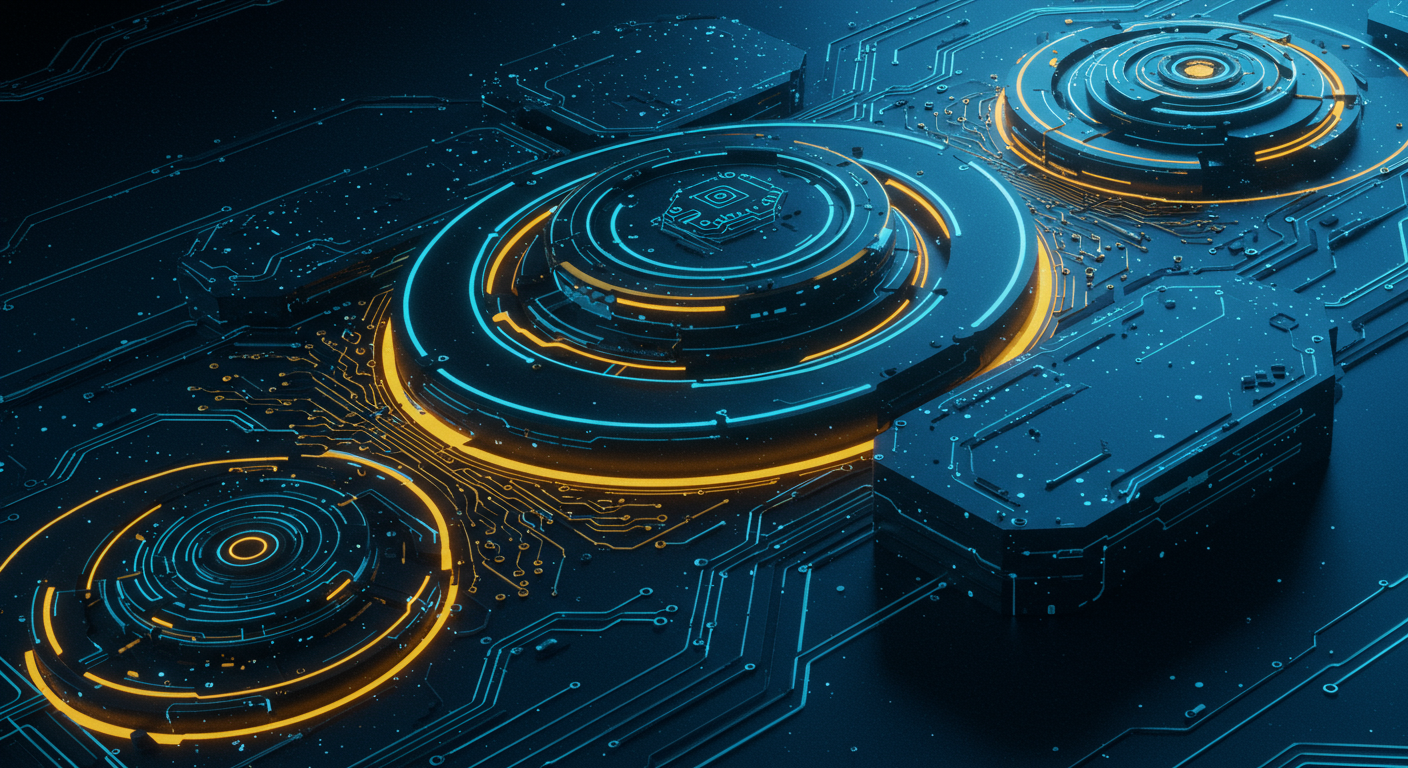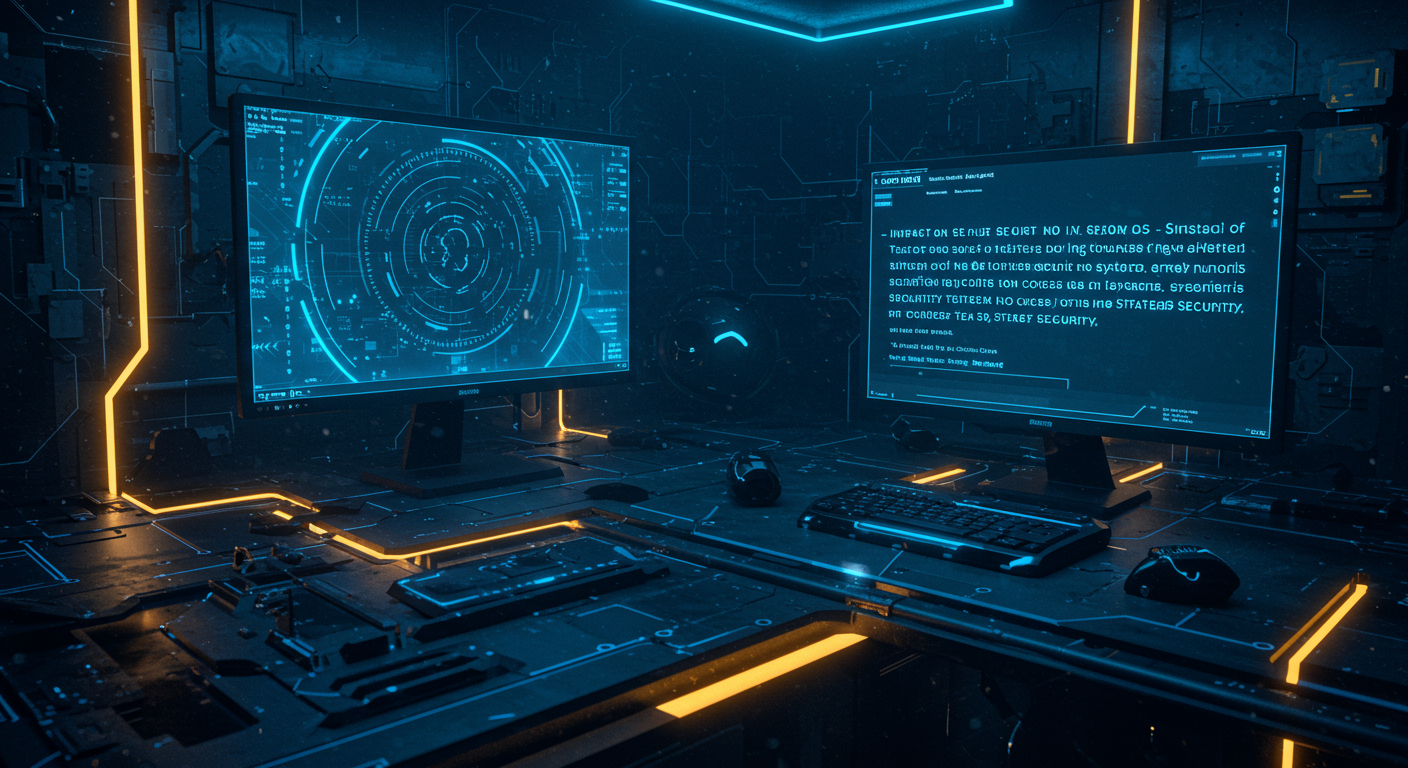CodeMender: DeepMind's AI Guardian for Automated Vulnerability Patching

The Dawn of Autonomous Code Repair: Introducing CodeMender
Imagine a world where software fixes itself – well, almost! Today, the gap between discovering vulnerabilities and patching them is widening, leaving us exposed. But hold onto your hats; DeepMind is stepping in with CodeMender.
What is CodeMender?
CodeMender is an AI agent designed to automate the process of identifying, analyzing, and patching software vulnerabilities. It's like having a tireless digital guardian for your code, constantly on the lookout for weaknesses.
Why is this a game-changer?
- Reduced Attack Surface: CodeMender can drastically cut down the time it takes to patch vulnerabilities, limiting the window of opportunity for attackers.
- Mitigation of Zero-Day Exploits: By proactively finding and fixing flaws, CodeMender helps defend against zero-day exploits, where attackers strike before a patch is available.
- Enhanced Cybersecurity: Integrating AI for vulnerability management elevates cybersecurity to a new level of responsiveness and resilience.
Gemini Deep Think Architecture
Built on the Gemini Deep Think architecture, CodeMender boasts advanced reasoning and problem-solving skills. It’s not just about identifying the problem, but also about devising and implementing effective solutions, autonomously generating patches.
In a nutshell, CodeMender represents a significant leap towards autonomous code repair, potentially reshaping the cybersecurity landscape and making our digital world a bit safer, one patch at a time. Now, how long until it can write its own stand-up routine?
DeepMind's CodeMender isn't just fixing bugs; it's rewriting the rules of cybersecurity with AI.
How CodeMender Works: Deep Dive into the AI Architecture

CodeMender, the brainchild of DeepMind, leverages advanced AI to automatically detect, analyze, and patch software vulnerabilities. Think of it as an AI-powered guardian constantly watching over your code. Here's a peek under the hood:
- Vulnerability Detection Module: This module scans code for potential weaknesses using a combination of techniques. It's like a super-powered spell checker, but for security flaws.
- Analysis Engine: Leveraging Gemini Deep Think (a tool designed to provide AI assistance for coders), the analysis engine understands the context of the code and pinpoints the root cause of vulnerabilities. Gemini Deep Think allows CodeMender to look beyond the surface and grasp the underlying logic.
- Patch Generation Module: This module uses AI code synthesis to create potential patches.
- Testing Framework: A comprehensive testing suite, using fuzzing, static analysis, and dynamic analysis, verifies the effectiveness and safety of generated patches. It ensures the "fix" doesn't break anything else.
- Learning Loop: CodeMender continuously learns from past experiences, refining its patching skills and adapting to new types of vulnerabilities. This iterative process makes it smarter over time.
AI Techniques Used for Patch Generation
CodeMender uses sophisticated AI techniques, including program repair and adversarial training, to ensure robust and reliable patches. The system refines its patch generation by creating adversarial examples to test the produced code.
Automated Software Testing AI
The automated testing framework utilizes techniques like fuzzing (bombarding the code with random inputs), static analysis (examining code without running it), and dynamic analysis (examining code while running it) to rigorously validate patches before deployment. This layered approach significantly reduces the risk of introducing new issues.
With its self-improving architecture and cutting-edge AI, CodeMender represents a significant leap forward in automated vulnerability management.
CodeMender’s arrival signals a potential quantum leap in how we secure our digital infrastructure.
The Old Guard's Limitations
Traditional vulnerability management relies heavily on:- Human Analysts: Vulnerability scanning tools flag potential issues, but it's up to security teams to analyze, prioritize, and remediate, a process that can be painstakingly slow.
- Reactive Patching: Most security teams operate in a reactive mode, scrambling to patch vulnerabilities after they've been identified and, often, after they've been exploited.
- Zero-Day Exploits: Traditional tools struggle to address zero-day exploits – vulnerabilities unknown to vendors and security firms, leaving systems vulnerable until a patch is developed.
CodeMender's AI-Powered Approach
CodeMender represents a paradigm shift with:- Automated Analysis: Leveraging AI, CodeMender automatically analyzes code, identifies vulnerabilities, and even understands their potential impact.
- Proactive Patch Generation: CodeMender can proactively generate patches, significantly reducing the window of vulnerability – moving security from reactive to proactive.
- Cost Savings and Efficiency: By automating large parts of vulnerability management, companies can save on analyst time and minimize costly data breaches.
Impact on Security Teams

Instead of spending countless hours triaging alerts and manually patching systems, security teams can focus on:
- Strategic Security Initiatives: Focusing on higher-level security planning, threat modeling, and proactive defense strategies.
- Vulnerability Prevention: Spending more time on secure coding practices, threat landscape analysis, and security awareness training.
- AI in vulnerability management benefits mean a shift from fire-fighting to fire prevention.
DeepMind's CodeMender isn't just an intriguing concept; it's a potential game-changer poised to rewrite the rules of cybersecurity.
Protecting Diverse Software Systems
CodeMender’s versatility shines in its ability to secure various software environments:- Operating Systems: Imagine an OS continuously patching itself against zero-day exploits, a self-healing fortress against malware.
- Web Applications: CodeMender can identify and patch vulnerabilities in real-time, preventing data breaches and defacement. Consider it a diligent security guard for your web presence.
- Embedded Devices: Securing IoT devices, from smart thermostats to industrial sensors, has never been more critical, and CodeMender can automate vulnerability patching.
- Cloud Infrastructure: As cloud environments become increasingly complex, CodeMender can provide automated security, scaling with your needs.
Industry-Specific Use Cases
Here are some potential CodeMender use cases across different sectors:- Finance: Preventing fraudulent transactions and safeguarding sensitive financial data.
- Healthcare: Protecting patient records and ensuring the integrity of medical devices.
- Government: Securing critical infrastructure and protecting government networks from cyberattacks.
- Critical Infrastructure: Ensuring the reliable operation of power grids, water systems, and other essential services.
Strengthening Open-Source Security
"Open-source software forms the backbone of much of our digital infrastructure, and CodeMender offers a promising path toward significantly improving its security,"
CodeMender could automate AI for open source security by identifying and patching vulnerabilities in open-source projects. Think of it as a tireless contributor dedicated to fortifying the code that powers our world.
CodeMender in DevSecOps
Imagine incorporating CodeMender into your CodeMender DevSecOps workflow, where security checks become an automated step in development.Hypothetical Breach Prevention
Let's ponder a world where CodeMender was in place during past major breaches; perhaps those incidents could have been avoided entirely.CodeMender offers a compelling vision of a future where AI actively defends our software systems, potentially AI preventing cyberattacks. Let's shift our focus now to the tools and technologies that can enhance CodeMender’s efficacy.
AI is rapidly changing the cybersecurity landscape, and with tools like CodeMender, we must also consider the ethical implications.
The Tightrope Walk: Ethical Concerns
The rise of autonomous code repair introduces some knotty challenges:
- Unintended Consequences: Imagine a patch designed to fix one vulnerability inadvertently opens another, a classic case of unintended blowback.
- Potential for Misuse: An AI designed to fix code could also be used to subtly alter it for malicious purposes. Think about it.
Humans in the Loop
Despite the allure of full automation, human oversight remains crucial.
- Validation is Key: Always have a human expert review and validate AI-generated patches before deployment.
- Control the Flow: Implement safeguards to prevent unintended consequences and ensure alignment with security policies. Consider a multi-stage deployment.
The Horizon: AI in Cybersecurity's Future
Looking ahead, expect more sophisticated AI agents to defend our digital realms.
- Threat Intelligence Power Up: AI can analyze vast datasets to identify and predict emerging threats with incredible speed.
- Skill Up or Step Aside: AI's impact on cybersecurity jobs means security professionals need to acquire new skills in AI and machine learning. Automation will handle the rote tasks.
CodeMender isn't just another tool; it's DeepMind's attempt to build an AI safety net for our ever-growing codebase.
Getting Started with CodeMender: Availability and Implementation
As of now, CodeMender operates primarily within a limited release framework. Unlike tools with open access like ChatGPT, CodeMender's availability is carefully controlled, ensuring optimal performance and responsible deployment. This means gaining access might involve joining a beta program or requesting a demo.
Implementing CodeMender
"Think of it as integrating a highly skilled but extremely meticulous code reviewer into your workflow."
The implementation process is nuanced and depends heavily on your existing software infrastructure. You'll likely need to consider:
- Integration: CodeMender may need to integrate with existing IDEs, CI/CD pipelines, and code repositories (like Git). For instance, think of connecting it alongside tools that offer code assistance.
- Configuration: Tailoring CodeMender to your specific coding style, security policies, and vulnerability definitions.
- Training: While CodeMender comes pre-trained, it might benefit from further training on your codebase to improve accuracy and relevance.
Pricing and Resources
Pricing models haven't been broadly publicized, but expect tiered licensing depending on the size of your codebase and the number of users. Resources like documentation and community forums, while nascent, are expected to grow as CodeMender matures. Stay tuned to DeepMind's official channels for more concrete details.If fortifying your code against vulnerabilities with AI sounds appealing, consider reaching out to DeepMind for a DeepMind CodeMender demo or to inquire about CodeMender implementation. CodeMender pricing will depend on factors like code base size and licensing.
Keywords
CodeMender, DeepMind, AI, Vulnerability Patching, Cybersecurity, Gemini Deep Think, Automated Patching, Software Security, Vulnerability Management, Zero-Day Exploits, AI code repair, AI-powered vulnerability management, AI for software security, Autonomous code patching, DeepMind AI cybersecurity
Hashtags
#AI #Cybersecurity #DeepMind #CodeMender #AISecurity
Recommended AI tools

Your AI assistant for conversation, research, and productivity—now with apps and advanced voice features.

Bring your ideas to life: create realistic videos from text, images, or video with AI-powered Sora.

Your everyday Google AI assistant for creativity, research, and productivity

Accurate answers, powered by AI.

Open-weight, efficient AI models for advanced reasoning and research.

Generate on-brand AI images from text, sketches, or photos—fast, realistic, and ready for commercial use.
About the Author

Written by
Dr. William Bobos
Dr. William Bobos (known as 'Dr. Bob') is a long-time AI expert focused on practical evaluations of AI tools and frameworks. He frequently tests new releases, reads academic papers, and tracks industry news to translate breakthroughs into real-world use. At Best AI Tools, he curates clear, actionable insights for builders, researchers, and decision-makers.
More from Dr.

